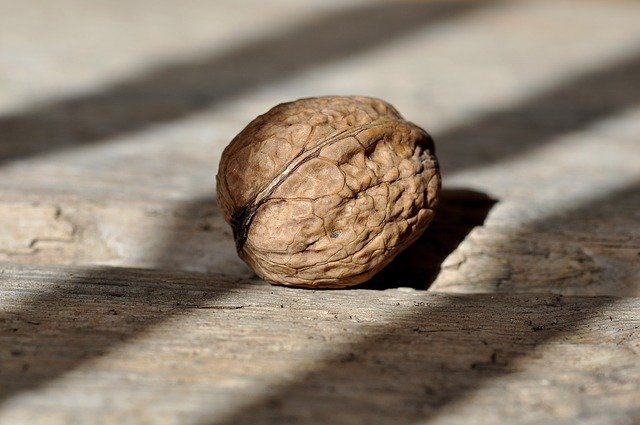How to Prevent Rotting in a Shed Floor
Recently, some family friends of ours purchased a home, and we assisted them in settling in. It was to our dismay that we found that their shed floor was in poor shape. It was decaying to the core.
They had a large amount of gardening materials that needed to be kept safe and secure. Because of damage caused by a downpour, the floor had to be replaced. As a result, I was left wondering how to prevent a shed floor from decaying.
An effective shed floor must be properly made, fitted, and maintained to prevent rotting from occurring. The most common causes of rot in a shed floor are moisture from rain, wear and tear from regular usage, and the aging of the structure itself. A shed floor should be pressure treated to ensure that it will not rot, deteriorate, or grow mold over time.
Knowing how rapidly a shed floor may degrade, I went outside and looked at my own shed floor. Can you tell me how I can prevent my shed floor from decaying, why it is rotting, how I can tell if my shed floor is rotting, and when I should replace it?
These are the kind of questions that I will be answering in this essay..
Identifying the Signs of Rotting in a Shed Floor
In the event that you haven’t looked at your shed floor in a while and the potential of floor rot is your primary worry, there are many methods that may be used to establish whether or not you have a decaying shed floor.
Mold may be detected by the smell of old earthy damp socks, which is a definite indication of the presence of mold. Mold can only develop on surfaces when there is an excessive amount of moisture present.
If you see green or discolored stains on your floor in some areas, this might be a result of water damage or mold growth.
The presence of discolored and splintering wood pieces or boards around the joints indicates the presence of rot in the structure.
On the floor, along the hinges, along the walls, and in the corners are all places where you should look for wet or damp spots.
Sagging and sponginess in the floor are signs that it is decaying; if the floor bounces and emits dampness when you foot on certain locations, the floor is most likely rotting.
What is causing the rot in my shed floor?
All forms of wood are capable of absorbing water. A wood surface that is always damp and unable to dry off properly is an ideal breeding ground for mildew, mold, and fungus to thrive.
Wood, which serves as a food supply for these bacteria, must be kept dry and protected at all times. Wood rot develops as a result of the mold, mildew, and fungus eating away at the moist/wet wood, causing it to rot.
Usually, once the rotting begins, those sections of the shed floor must be removed, else the mold, mildew, and fungus will spread throughout the structure.
After the shed floor has dried, the fungus and mold may be gone, but the damage will have caused the wood to become spongy and crumbly, making it difficult to walk on.
Flooring that is falling apart must be fixed or replaced since it is a danger for people to walk on because they might trip over the decaying pieces.
How to Prevent the Rotting of a Shed’s Floor
After taking into consideration everything in your shed (including items such as tools, equipment, and gardening equipment), the thought of your shed floor rotting and destroying your property forces you to recognize the need to prevent your shed from rotting before it has a chance to destroy your valuable equipment.
You may prevent your shed floor from decaying in a variety of methods, some of which are included below:
Wooden Sheds Should Be Pressure Treated
Request that your new wooden shed be pressure treated before it is delivered to your location. It will be more costly, but the savings from not having to replace broken equipment, gardening equipment, or tools will be well worth it.
You may cure the shed yourself, but it is preferable to have it done by a professional since the process includes immersing the boards in a vacuum-sealed tank loaded with chemical preservatives for an extended period of time.
This chemical bath provides protection against fungal development and mold growth, even in the most difficult-to-reach places.
When it comes to chemically treating your shed before it is delivered, if you do not want to spend the additional money or if you have moved into a property that already has a shed that has not been treated, you may do it yourself at home.
Although the treatment will not be as effective as one performed by a professional, it will be beneficial.
Check to See That Your Shed Has the Proper Foundation
Wood and water should never be mixed. A sturdy, water-resistant foundation is required for a shed. Wood rot may occur if the shed is built on the improper foundation or if it is built directly on top of the earth.
If you build the shed directly on the ground without using a foundation, the wood will begin to collect moisture from the earth after it has rained or if there is dew in the early morning hours.
There are shed bases available that are specifically built to prevent the shed floor from coming into contact with the earth. They serve to keep the shed elevated off the ground and to drain any extra water that may accumulate when it does rain.
These bases are either composed of treated wood or eco-friendly plastic, which helps to keep excess moisture at bay while they are in use.
Sunlight is required to keep the floor of your shed from rotting.
Place your shed in a location where it will get direct sunshine from all directions and where there are no trees to impede the sunlight. On wet days, the sunlight will aid in the drying of the shed and will assist to prevent moisture from accumulating on the shed floor and wall surfaces.
You should avoid installing your shed near the bottom of a hill since the rain will collect in the corners and there won’t be enough sunlight to keep the shed floor moist.
Even if your shed floor is being dried by the sun, I suggest that you check on it on a regular basis and do any required repairs.
Using a Water-Based Sealant to Keep Water Out of Your Shed
These days, there are numerous incredible water-based sealants available on the market. In order to prevent water and moisture from getting into the wood, they should be used.
If you use a sealant, you will have to reapply it every one to two years, but it is well worth it since the sealer works to keep moisture out and wood-destroying pests at away.
Is It Possible to Replace a Rotting Shed Floor?
You may select from a variety of flooring solutions if your floor is beyond repair or if you wish to replace it to make upkeep simpler in the future. Here are some alternatives to think about:
Concrete and epoxy are being used to repair a rotted shed floor.
If you are removing an old wooden shed floor that was installed over a concrete foundation, cleaning up the concrete and fixing any cracks or dents in the concrete is an ideal approach to prepare the surface for an Epoxy floor coating.
If you get the non-slip component, you will not have to worry about sliding when it does rain. This option is pretty affordable. The concrete is protected by epoxy, which cures to a rock-hard finish.
Epoxy is a versatile material that comes in a variety of colors and finishes. It requires little to no upkeep, and you will be able to use this floor for many years.
Using Cement Sheets to Replace the Floor of Your Rotting Shed
Cement sheets are a fantastic approach to help prevent rot from occurring. Hessian is a very adaptable flooring material that may be installed over practically any subflooring material, including timber frames and concrete slabs, as well as hardwood floors (if they are in good condition).
Cement sheets are resistant to water, are long-lasting, and are fire-resistant. In addition, this flooring material is resistant to insects, termites, and rotting.
In addition to being costly due to the requirement for specialized cutting equipment, it is recommended that you have a professional install cement sheets for you.
How to Prevent Rotting in a Shed Floor
How to Restore Your Rotting Shed Floor with New Wood
Removal of the old rotting floor and replacement with treated wood will be a less costly choice than installing cement sheets and will be simpler to do as a do-it-yourself job.
Timber is still wood, and as such it is prone to moisture retention, mold, mildew, fungus, and decay if not properly maintained.
You may treat the flooring every two years, but this does not ensure that it will not develop any of the concerns listed above.
Plywood is a good option for replacing a rotted shed floor.
Plywood is often used as a flooring for a shed. If you are unable to afford the other alternatives, this is the best option for you. Despite the fact that plywood is a durable material, it will need to be treated and sealed in order to prevent rotting.
Even if you seal and treat it properly, plywood will not endure for very long. It has a high susceptibility to water retention, rot, mold, and mildew, among other things.
Using plywood as a temporary flooring option is all that is necessary.
Rubber Mats may be used to replace your rotting shed floor.
When building a shed floor, use concrete subflooring and place rubber mats over the subfloor to ensure that the floor does not decay. Rubber mats are often non-slip, waterproof, rot, mold, and mildew resistant, as well as rot and mold resistant.
Quality mats have the drawback of being a little more costly, but they are more pleasant to walk on and easier to clean than cheaper mats.
Using Slate Tiles to Replace the Floor of Your Rotting Shed
Even though tiles are more costly, high-quality slate or non-slip tiles will be an ideal alternative for replacing your decaying shed floor if it is in good condition.
Tiles have the benefit of not attracting termites, mold, or fungus, as well as being waterproof and fire-resistant, among other characteristics.
While it is necessary to have a solid basis before laying the tile on top, otherwise the tile will lift, you will never have to worry about your shed floor being rotted again.
Using Diamond/Checkerplate to Replace Your Rotting Shed Floor
Diamond and checker plate flooring are suitable for use on concrete slabs, poured concrete, and wood subfloors. They are quite inexpensive. Mold, mildew, and decay are not a problem with diamond and checker plate. This sort of flooring is also resistant to water and fire.
Using diamond and checker plate flooring has a few disadvantages, the most significant of which is that it is slippery when wet and that it is rather costly to install.
Replace a rotted shed floor with a self-leveling compound to prevent further rot.
This solution will need the use of concrete subflooring. To finish the project, you must remove the rotten floor, clean the concrete subfloor, and allow it to thoroughly dry.
Prepare the self-leveling compound by mixing it well and applying a thick layer to the floor. A new lever surface will be created when the self-leveling compound flows into all of the nooks and dents in the lever surface.
Keep in mind that you should wait at least 24 hours before trying to walk on the self-leveling compound.
Sandpaper is used to replace the floor of a shed.
Even though it seems unusual, I’ve seen individuals utilize rolls of sandpaper as a temporary flooring material, which is not uncommon. It’s a low-cost material that will survive until you have the funds to repair or replace your shed floor completely.
Some rolls include adhesive backings that will adhere to a firm flooring if installed properly. It will not function on loose gravel or dirt.
The disadvantage of this flooring material is that it might cause injury if you fall on it, and it can curl if it becomes too damp.
Is It Possible to Restore a Rotting Shed Floor?
The shed floor may be repaired if you don’t want to replace it entirely.
The following are the steps to repairing a deteriorating shed floor:
- To begin, empty the shed of all of its belongings. Using your fingers, feel for rot (crumbly texture) or spongy, mushy, and damp regions on each board to determine its stability and strength.
- Check each board with a leveler to check if there is a possible slope; if there is a slope, the foundation will need to be leveled.
- Remove all of the nails that are holding the damaged boards together using a tiny ply or claw hammer. If you have a solid wood floor, you may use a jigsaw to chop off rotten areas in square chunks that are simple to repair.
- Fill the foundation with gravel and soil and compact it firmly to help provide a more stable foundation for the house.
- Installing a concrete foundation, if you have the time and resources, would guarantee that the floor is constantly level, and it would also serve as a far superior subfloor than dirt and gravel would.
- To replace the damaged board, measure the size of the damaged board you removed and cut the replacement board (which should be pressure-treated wood) to that measurement.
- Nail the new floor firmly to the remainder of the floor using galvanized nails, making sure that it is level with the rest of the floor.
- Allow each layer to completely dry before applying the next before applying three coats of wood preserver to the whole floor surface area Keep in mind that you should reapply the wood preserver at least once a year.
Concluding Remarks
For the tools and gear that you keep in your shed, a decaying shed floor might spell catastrophe. Moisture and mold may cause damage to your belongings, which can be quite costly. Protecting your belongings by taking preventative steps to keep the shed floor from decaying is a terrific method to keep them safe.
If you want to repair or replace your shed floor, you must first pick a solution that you are satisfied with and that you are prepared to invest the necessary time and money to keep up with.





